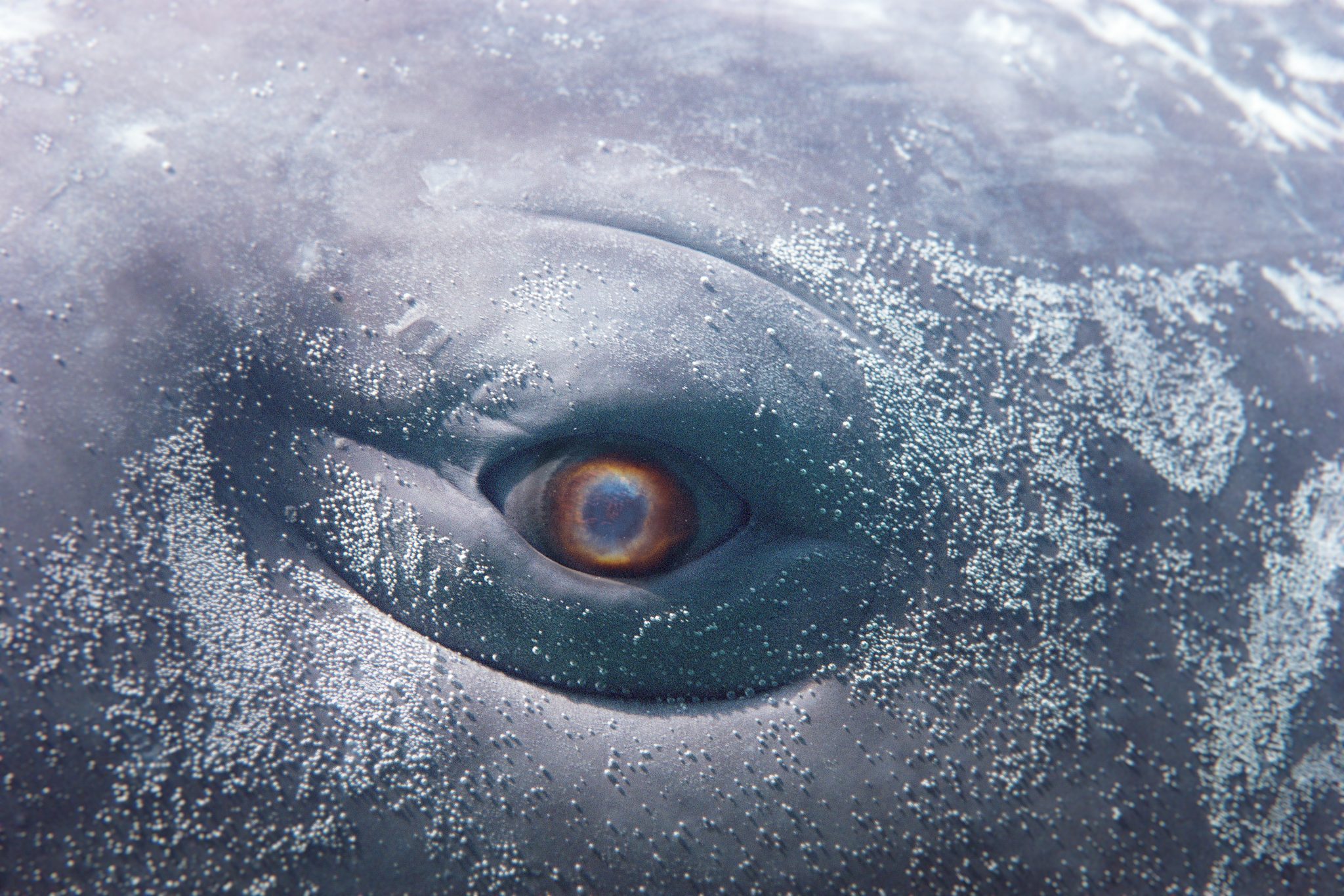Wu Tsang’s MOBY DICK; or, The Whale revisits the Great American Novel as political allegory, queer romance and sci-fi fantasia
Moby-Dick is one of those books that many people vaguely know even if they haven’t read it. Herman Melville’s 1851 novel about a whaling ship setting sail from Nantucket in search of a quasi-mythical albino cachalot has gradually secured its stature as one of the classics of American literature, a regular set text in US high schools and the basis for a revered 1956 film by John Huston (among several other less well regarded versions, both before and after). But Wu Tsang is interested in those aspects of the tale that have traditionally been ignored – even when they’re staring you right in the face. For a start, that famous ‘first line’, ‘Call me Ishmael’, does not in fact open the book. It is preceded by a sort of prologue of cetacean etymologies and literary extracts ‘supplied by a Sub-Sub-Librarian’. Tsang’s ‘silent’ film, MOBY DICK; or, The Whale (2022), restores this character’s inaugural place in the story, makes him the narrator of the whole film in voiceover (the only voice, in fact, that we hear) and casts American poet and Black studies scholar Fred Moten, decked in sparkling blue eyeshadow and flowing robes, and encircled by teetering piles of old books.
The other aspect of the book generally brushed over by prior adaptations (notably Huston’s) is the gay love story at its heart. In the novel the protagonist Ishmael and his Pacific Islander companion Queequeg share a bed, wake up wrapped in each other’s limbs and declare themselves ‘married’. This, too, Tsang draws out, shooting Queequeg and Ishmael’s awakening with a frank concupiscence. Later scenes in which the sailors, stripped to their waists, squeeze the oil from cauldrons of viscid whale blubber are rendered steamily homoerotic. The final result is pitched somewhere between the epic silent-era Hollywood cinema of Cecil B. DeMille and the sometimes-surreal gay erotica of Wakefield Poole, a sinuous and often psychedelic picture with one foot in the traditions of Black radical thought, animated by a lithe choreography drawing equally on classical ballet and ballroom vogue.

Tsang has frequently used her work as a platform to elevate others, especially marginalised groups. Her film Wildness (2012) gave voice not only to a predominantly Latinx and immigrant LGBT+ community in Los Angeles, but even to the Silver Platter nightclub that many in the community called home, from the imaginary perspective of which the film’s voiceover is delivered. Tsang’s solo show at Liverpool’s FACT in 2017 focused on singer-producer Kelela and her position as a queer woman of colour in a white, male-dominated music industry.
In that respect MOBY DICK; or, The Whale is little different, being a collaboration not just with Moten and regular collaborator Tosh Basco, but a whole collective, Moved by the Motion (including music director Asma Maroof, writer Sophia Al Maria and choreographer Josh Johnson), which at the time of production was based at Zürich’s Schauspielhaus theatre. In his role as narrator, Moten speaks not only Melville’s words but also quotes from the Trinidadian historian C.L.R. James’s analysis of Moby-Dick as a mirror of the class system under industrial capitalism, with the whaling ship as a “floating factory”. With such a panoply of voices, it would seem as though the only thing missing was the perspective of the whale itself.

The slowly drifting imagery in Of Whales is generated in real time by a cross-platform gaming engine called Unity (previously used for Pokémon Go and Call of Duty: Mobile), creating a potentially endless moving-image work. It has a set structure, but the details are randomised, the specific trajectories of different sprites changing each time. Over the course of about an hour, we plunge deep into a CGI ocean, passing from recognisable sponges, anemones and jellyfish to evermore abstract and fantastical imagery, before surging back up towards blue skies and lapping waves. Riffing on the book’s 93rd chapter, in which the cabin boy Pip is cast overboard and sees the depths as a ‘wondrous… firmament’, the picture is at times like an outer-space starscape, against which the whale itself appears only as an indistinct silhouette. Its insight into cetacean psychology is less clear – but then perhaps that’s the point. With its woodwindbased soundtrack and increasingly trippy imagery, the work becomes a woozy meditation on the inaccessibility of nonhuman minds. The elusiveness of the whale, alluded to by Tsang, becomes less a failure of the director’s imagination, more a structural necessity: like the planet’s surface in Stanisław Lem’s novel Solaris (1961), it is a cipher for human desires, a metaphor for metaphoricity itself. Between the two works, the archetypical ‘Great American Novel’ is seen in new light – as political allegory, queer romance and sci-fi fantasia.
Of Whales at Museo Nacional Thyssen-Bornemisza, Madrid, through 11 June
